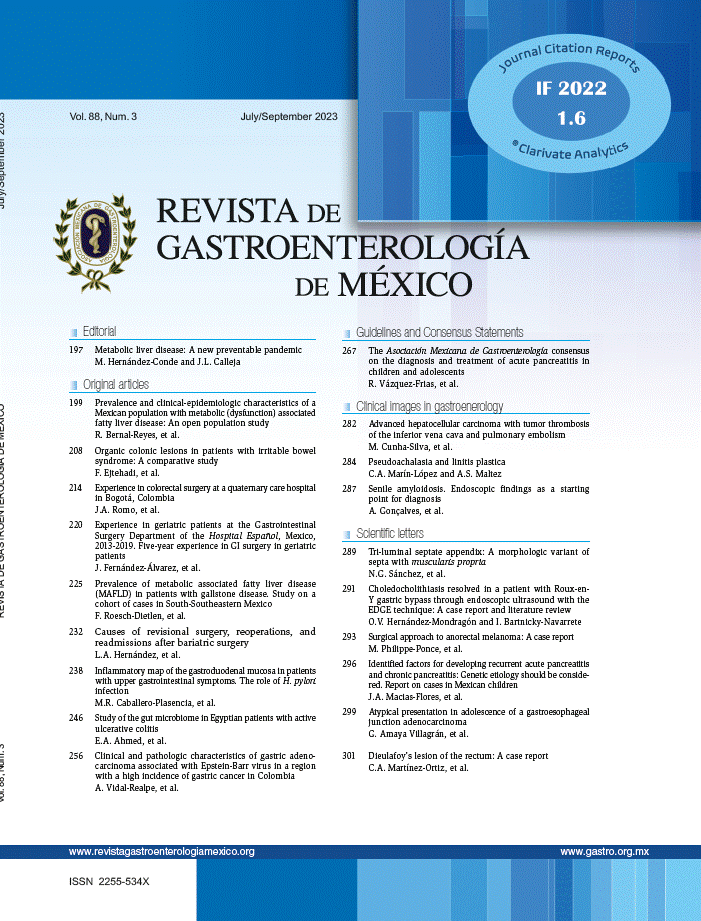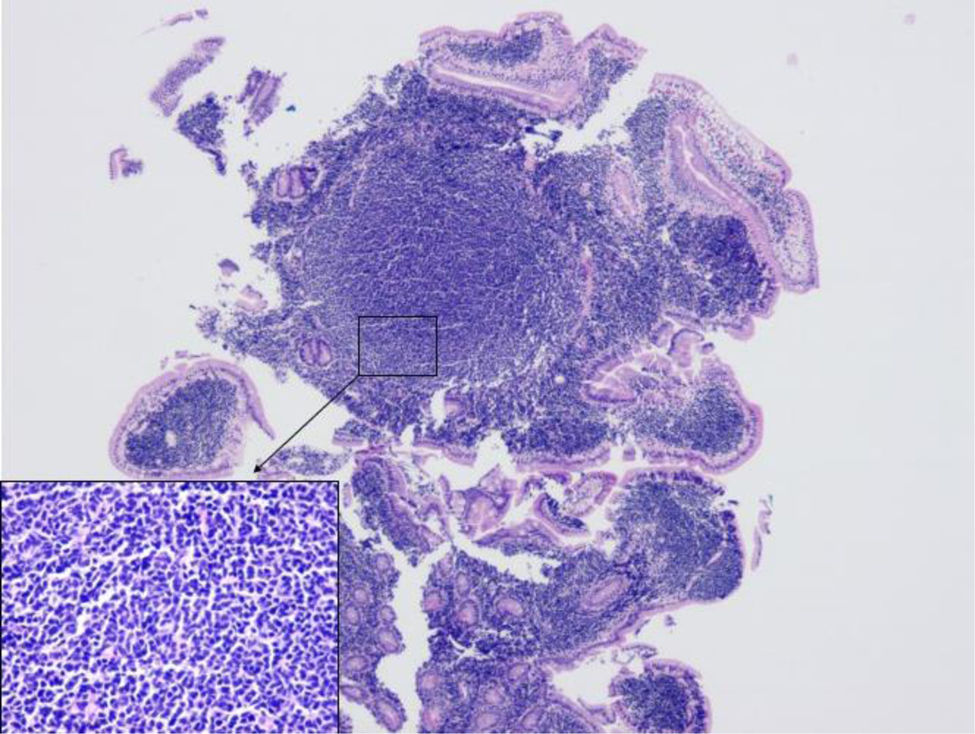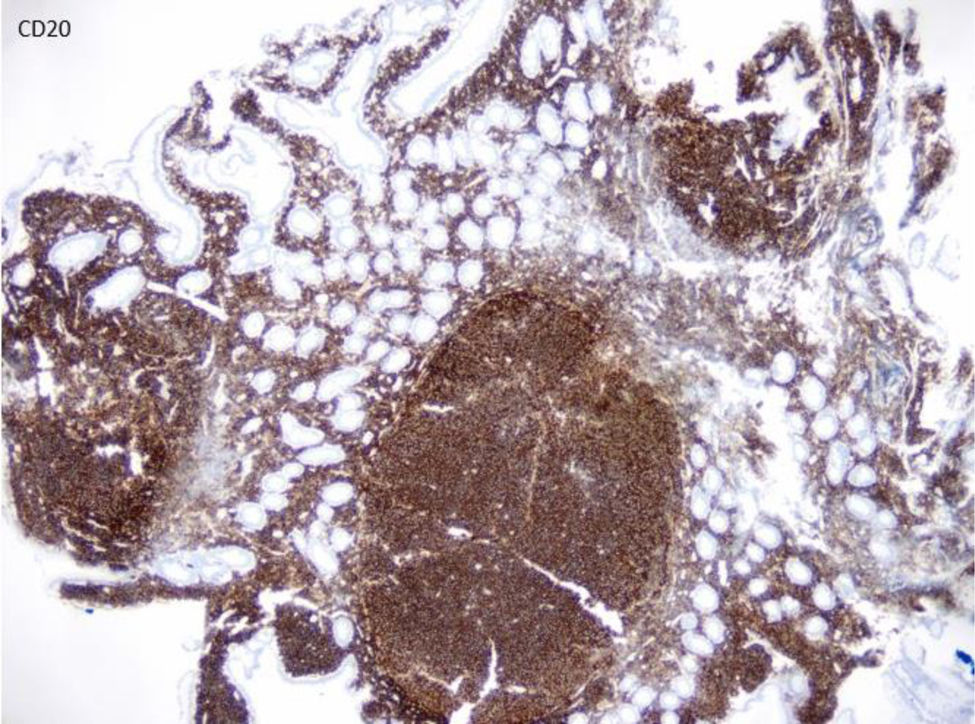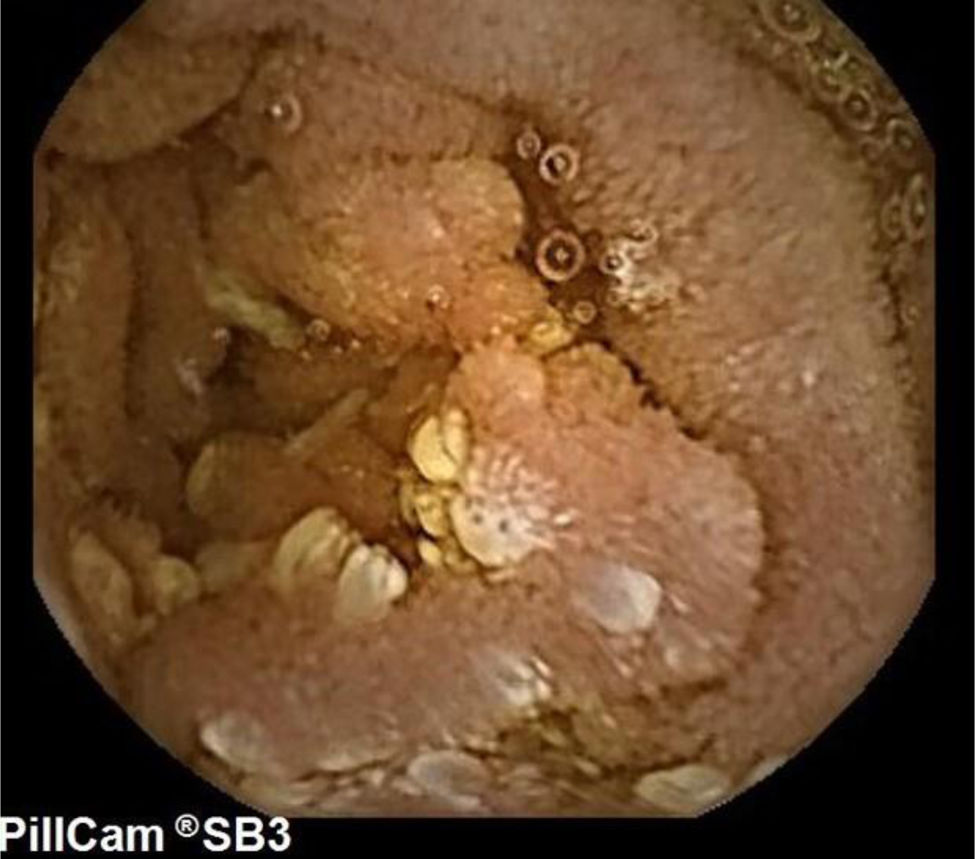Follicular lymphoma (FL) is one of the most frequent non-Hodgkin lymphomas, but accounts for less than 4% of the gastrointestinal lymphomas. Duodenal-type FL is a rare variant, recognized in 2016, that affects the entire gastrointestinal tract. Occasionally multifocal, the most frequent presentation is periampullary, and rarely associated with symptoms. A 60-year-old woman, with no prior medical history or medication use, underwent gastroscopy due to gastroesophageal reflux. Mucosa with whitish micronodules was heterogeneously distributed in the second part of the duodenum, involving 75% of the circumference and affecting the major duodenal papilla (Fig. 1). The finding was confirmed through duodenoscopy (Fig. 2). Biopsies were taken, revealing a lymphoid infiltrate in the lamina propria, forming follicular aggregates with 2 centroblasts (Fig. 3), no villous atrophy or architectural distortion, and IHQ staining positive for CD20, CD10, and BCL-2 (Fig. 4), consistent with grade 1 duodenal-type FL. The study was completed through capsule endoscopy, showing involvement in the entire duodenum (Fig. 5), and a chest and abdominal computed tomography (CT) scan and positron emission tomography (PET)-CT scan showed no systemic or nodal involvement. The watch-and-wait strategy was adopted, leaving radiotherapy or rituximab use for more aggressive cases.
The authors declare that this article contains no personal information that could identify the patient, and so obtaining informed consent was not required. In addition, because this is not a research study, approval by an ethics committee was not necessary.
Financial disclosureNo financial support was received in relation to this article.
The authors declare that none of them have or have had any financial or personal relationships with organizations that could give rise to a conflict of interest in relation to the article submitted for publication.









![Biopsy from the duodenum, with a uniform lymphocytic infiltrate forming follicular aggregates, with no visualization of macrophages (hematoxylin and eosin [H&E] staining, ×40, in the lower left corner of the image). Biopsy from the duodenum, with a uniform lymphocytic infiltrate forming follicular aggregates, with no visualization of macrophages (hematoxylin and eosin [H&E] staining, ×40, in the lower left corner of the image).](https://static.elsevier.es/multimedia/2255534X/unassign/S2255534X25001264/v1_202510270435/en/main.assets/thumbnail/gr3.jpeg?xkr=ue/ImdikoIMrsJoerZ+w97o/wdEXW47bqlyT1CqG6R0=)



